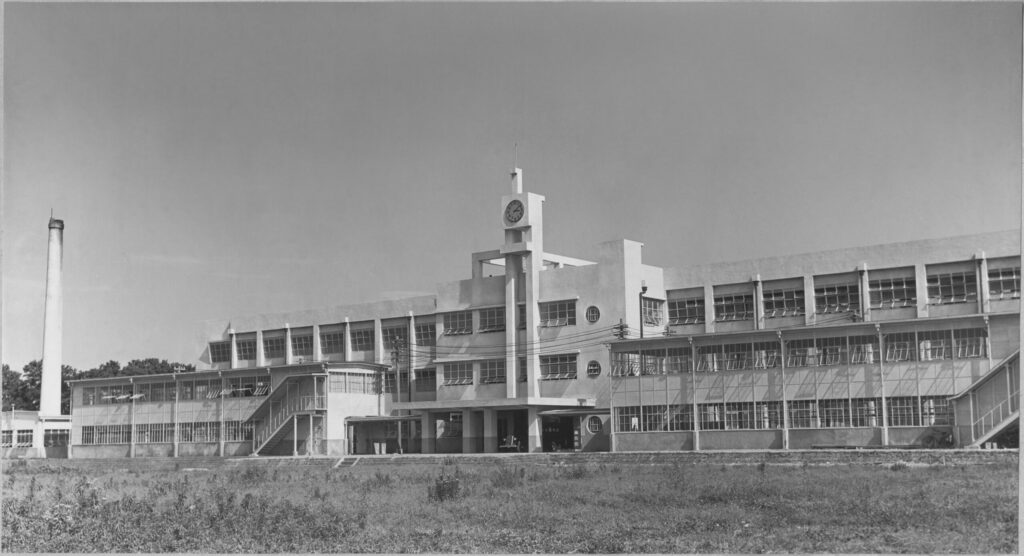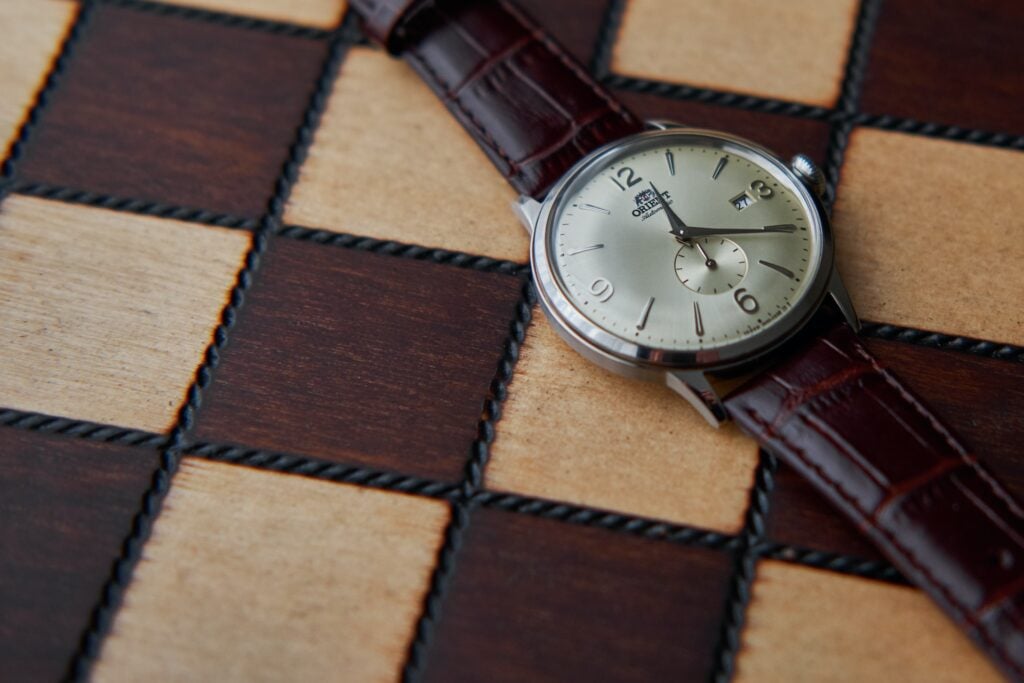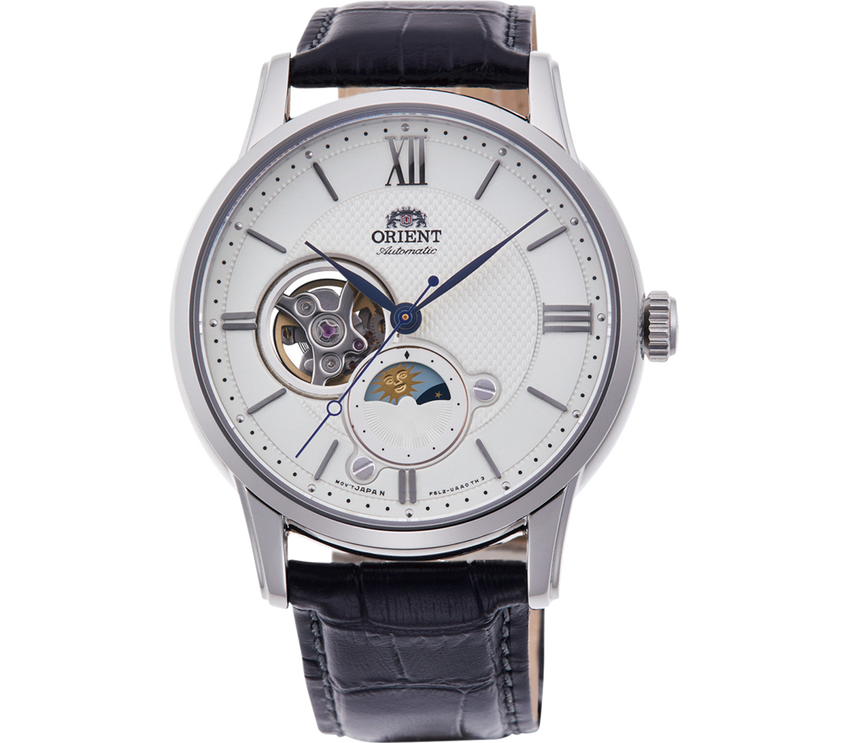‘Orient Watch Company‘ was founded by Shogoro Yoshida in 1950. This well-respected Japanese watch brand has a history which is unique and rich, evident through the exquisite timepieces they offer. Since its discovery, Orient Watches has pursued one single mission. This is to offer high-quality, attainable timepieces which adopt an enduring style.
Over the past 73 years, Orient has continued to build its reputation as one of the leading brands in the watch industry. With a wide variety of models, there is an Orient watch for every person and occasion.
The Beginning of Orient Watches
The origin of Orient Watch Company dates back to as early as 1901. Shogoro Yoshida opened ‘Yoshida Watch Shop’ where he sold pocket watches. Nearly 20 years later he established ‘Toyo Tokei Manufacturing’ where the company began making wristwatches in their Hino factory. During World War II the company had to be engaged in the mass production of aerial weaponry. After the war, Toyo Tokei Manufacturing was re-opened. However, it fell into financial difficulties and was shortly dismissed.
In 1950, employees from the Hino factory came together and began operating as ‘Tama Keiki Company’. Under this name, they produced their first wristwatch, the ‘New Orient’. After its initial success, the company changed their name to ‘Orient Watch’ in 1951.
The brand hired Tamotsu Aoki as an advisor in 1951. The Professor at the University of Tokyo and the first chair of the Horological Institute of Japan had great ambitions. He had the aim of regenerating Japanese watchmaking and reaching a more global audience. Orient has always had a focus on creating durable and reliable timepieces. Appointing Aoki has only helped the brand to achieve this.
1950s
In 1951, the ‘Orient Star’ was released. Taking inspiration from a shooting star, the Orient Star had dark blue hands and a high-end finish. This timepiece very quickly gained a reputation as a luxurious watch. 6 years later Orient released the ‘Orient Star Dynamic’. The T-type centre-second movement was developed in the mid-1950s. It overlayed the centre and fourth wheel of this watch. Thanks to a Nivaflex spring the movements were more robust. It was the first Orient watch to come equipped with this feature.
In 1958 the Royal Orient was released. It was included in Orient’s luxury line. With water-resistant specifications and elements of luxury, this practical timepiece was the main inspiration for the Grand Prix and Fineness lines released in the 1960s.
1960s
Orient Watches was well aware of the trends that were rising overseas. With dive watches becoming increasingly popular the brand released their Original Diver’s Watch in 1964. That same year Orient released the Grand Prix 100. This ambitious piece brought great acclaim to Orient’s reputation. The Orient Flash was another extremely ambitious watch. However, the production of this watch was shortly discontinued and it was subsequently reproduced in future years.
As the 1960s continued, Orient was still following global trends. A second diving watch, ‘Original King Diver’, was released. The Fineness watch had a strong focus on technological advancement. It had a Cal. 3900 movement which, at the time, was the thinnest in the world for a self-winding watch with a date and day display.
1970s
Noticing this was becoming popular overseas, this decade saw Orient Watches bring some colour into their dials. The gorgeous two-tone colour gradation on the 1970 Jaguar Focus showcased this perfectly.
In 1971 Orient introduced the Cal. 46 movement. This replaced the L-type self-winding movement that was currently in the watches. This movement was known for its durability, accuracy and reliability and it put Orient on the map. After Orient merged into Epson the precision of this movement was further improved. Over 50 years later this is still Orient’s favoured movement.
The Orient Touchtron was the first of its kind. It had an LED that lit up and displayed the time when the case was touched. Although the idea was great it tended to misoperate. The Touchtron was replaced by the Touchtron II. This had an illuminated display at the touch of a button.
1990s – 2010s
Although quartz technology was on the rise, Orient stayed true to its original watchmaking traditions. Skeletonised models showed the inside mechanical workings of the watch. The Mon Bijou of 1991 started this trend and it was later adopted for the ever-popular Orient Star.
In 2004, Orient Watches released a revival of the Royal Orient. The modern style of this watch can be seen reflected in many pieces in the present day. A new movement design was also featured in this watch – Cal. 88700. The Royal Orient became a staple in the brand’s 2008 lineup and to this day remains one of the most popular Orient watches.
Orient Watches in the Present Day
Since 2001 Orient Watches have been a part of the successful Seiko group. Following their initial aim, Orient Watches continues to produce timepieces that remain true to their rich and unique history.
Bright colours, moon phases and skeleton dials are all trends which can be seen through present-day releases. Orient watches currently have sports, classic and contemporary collections. They also have a revival collection which brings those well-loved discontinued pieces of history back to life with more modern technologies.
You are guaranteed to have a well-crafted watch when you are purchasing an Orient watch. They are considered to be timepieces that offer good value for money and reliability.
As an authorised retailer of Orient watches, we aim to provide you with the same reliability that the brand prides itself on. If you have any questions about the watches or the brand itself do not hesitate to contact us at info@firstclasswatches.co.uk








